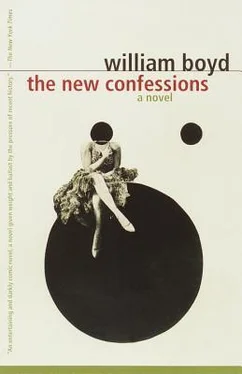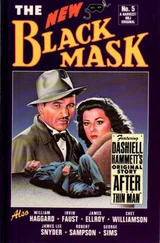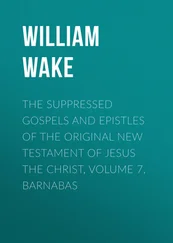Shortly after that I stopped filming. The handle of my Aeroscope was knocked off by a shell fragment. I received a second injury to add to that of Somerville-Start’s tooth — a deep gash on the side of my hand. I wrapped a handkerchief round it and lugged the camera back to the line. But for this damage I would have filmed the second wave going over. As it was I made my way back to the battalion HQ blockhouse, caught my breath, drank some whiskey, smoked half a dozen cigarettes and generally composed myself before attempting the risky journey back to Ypres.
I sent the new footage and the twenty-two minutes of Aftermath back to the Topical Film lab in Camden Town with precise instructions on how they were to be cut together. I told Donald that I had made significant alterations to the film and predicted that as it now stood there could be no possible objection from the chief censor.
Ten days later, one evening, I came back to the farmhouse to find Donald waiting for me.
“Is it back?”
“Yes.”
“Well? What d’you think?”
“I think it’s splendid. Extraordinary piece of work.”
I felt pleasure drain through me.
“I’ve been ordered to destroy it.”
His face was taut, somehow both sad and stern. He spent a long time filling his pipe. Then he told me the rest of the news. Only with the greatest of difficulty had he been able to prevent me from being sent back to the 13th. He had pleaded my youth and implied that I had been embittered by my own experiences of battle in the Salient, and that for me the film was a kind of expiation. Eventually, the chief censor had yielded somewhat. However, my pass was withdrawn. I was not to be allowed within one mile of the front line. All filming was to be vetted and supervised by Donald and must be strictly noncontroversial. Any more “seditious” film (the censor’s word) and I would be court-martialed and disciplined.
“So what do I do?” I asked, bitterly. “ Great British Regiments? ”
“Out of the question. I can offer you the Army Veterinary Corps, or a balloon unit of the Signals regiment.”
Animals or balloons? I chose balloons.
Then I apologized sincerely to Donald. He accepted it and warned me that one more error would be impossible for him to cover up.
“By the way,” he shouted as he drove out of the courtyard, “I’ve left something in the back of your motor.”
I walked over and looked in the boot. A sandbag filled with a cylindrical object. I looked — six silver film canisters. I felt my heart suddenly open to Donald, like a book. There was one copy of Aftermath of Battle extant in the world after all.
Faithfull and Nelson had learned of my misdemeanor and that the censor’s office at GHQ regarded me as highly suspect. Their manner towards me grew distinctly cooler, Faithfull’s in particular. I think he sensed I had been trying to outdo his Wipers film. I was suspicious of his motives now, and hid the canisters of Aftermath separately about my kit.
On the tenth of November, Passchendaele Ridge was finally captured and the Third Battle of Ypres was officially over, 156 days after it had begun with Faithfull’s mines (as I always thought of them) erupting under Messines Ridge, back in early summer.
I was, as ever, unaware of this a few days later as I stood in a sodden field behind Ypres watching the observers unroll and inflate their silvered canvas balloon. I did not resent my new assignment as much as I had anticipated. My balloon film Eyes in the Sky was almost complete. I filmed the balloon inflating, watching the bloated fish shape emerge and, with a billowy stirring, rise to the extent of its fore and aft tethers, until the roomy wicker basket slung beneath it just cleared the ground. The observers donned their parachutes and binoculars, connected their telephone lines and climbed in. With surprising speed the balloon rose up in the air to a height of round about a thousand feet.
I had everything I needed. I sat and drank tea with the winch operators, huddling in the lee of the lorry, sheltering from a keen wind that was blowing from the west. Our balloon was spotting for a sixteen-gun brigade of six-inch howitzers a quarter of a mile away in a ruined village. Every ten minutes or so we could hear the loud, drawn-out rip of the cannonade.
After a while the guns stopped firing and the balloon was winched down. We brewed up and had a surprisingly tasty lunch of corned beef fritters and MacConnachie stew, cooked over a Primus stove. We sat and chatted, glancing from time to time at the balloon as it twitched and shrugged at its moorings.
I do not know what prompted me, but suddenly I asked, “Do you think I could pop up for five minutes with my camera? Not too high — just to get an artillery observer’s view of the world.”
This was applauded as a marvelous notion by the observers. In truth, I was not thinking of Eyes in the Sky . I knew that here I would have my perfect opening shot for Aftermath of Battle .
I climbed into the creaking wicker basket and set up the Aeroscope on its tripod, which was lashed to the side. The simple operation of the field telephone was explained. I was offered a parachute and declined. I assured them I had no intention of jumping out. Soon all was ready. The mooring ropes were slipped and the balloon rose slowly up into the air.
For the first hundred feet or so I felt sensations of alarm, giddiness and faint nausea. I looked at the shrinking field where I had had my lunch, down the vertiginous arc of the balloon cable, watching the lorry, the crew, my motorcar diminish in size. Over to the left was the battery surrounded by its usual mess. So this is what a bird sees, I thought naively, as the countryside was revealed to me like a map. The roads, the farms, the dumps, the billets, the motor pools and transport lines, the fields and copses … From the air everything looked neater, had a context revealed that a ground view denied one. That bend in the road suddenly had a purpose — to avoid a stream. The jumble of shattered houses revealed the grid of streets and alleyways upon which they had been built. That distant straggle of trees edged a canal.… The banality of these observations only strikes the modern eye. This was the first time I could look down on the world from above. For me it was a kind of revelation, and never more so than when the front came into view.
At first glance it was like a vast path, stamped across Europe. I imagined a six-hundred-mile thoroughfare for giants trudging from the Alps to the North Sea. On either side, drab green wintry landscape bisected by this brown swathe stretched back into the haze of distance. I was astonished at just how localized it was. In the Salient the whole universe seemed brown and mired. Up here you realized just how thin that mud world was.
The green countryside browned gradually. There was a kind of bruised and trampled verge before the vermiculated lines of the old trench systems appeared — bay and traverse, bay and traverse — and beyond them the erratic spoor of duckboard and fascine tracks across the mud, the pools in the craters flat and opaque like pennies. From this range I could not see any men, but I knew they were down there, in their hundreds of thousands, hiding. It seemed like such a miserable attenuated strip of land to be fighting over, to have fought over for three years.… A smear across the countryside. A giant snail, leaving its slime track across Europe. A messy point of impact between two colliding forces.
Different horizons, I thought cranking the handle of the Aeroscope, different perspectives. I felt a curious privilege about having been allowed to witness both: exalted and abased. I swung my camera along the enormous furrow. What an opening shot, I thought; what a vision for my film. The godlike view. And then the scrabbling, squabbling mortals in the mud pools.
Читать дальше












